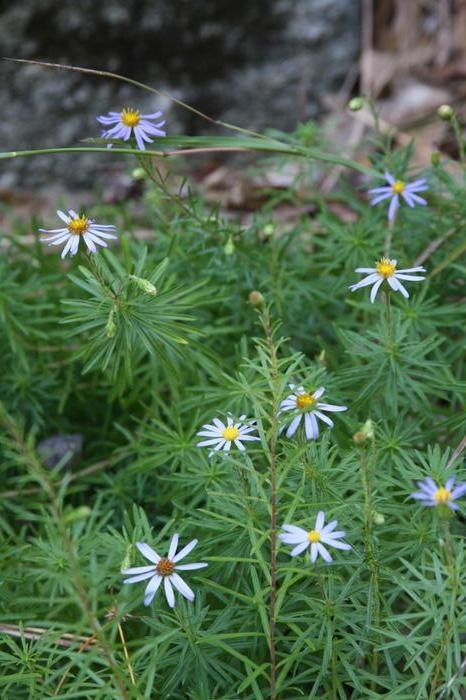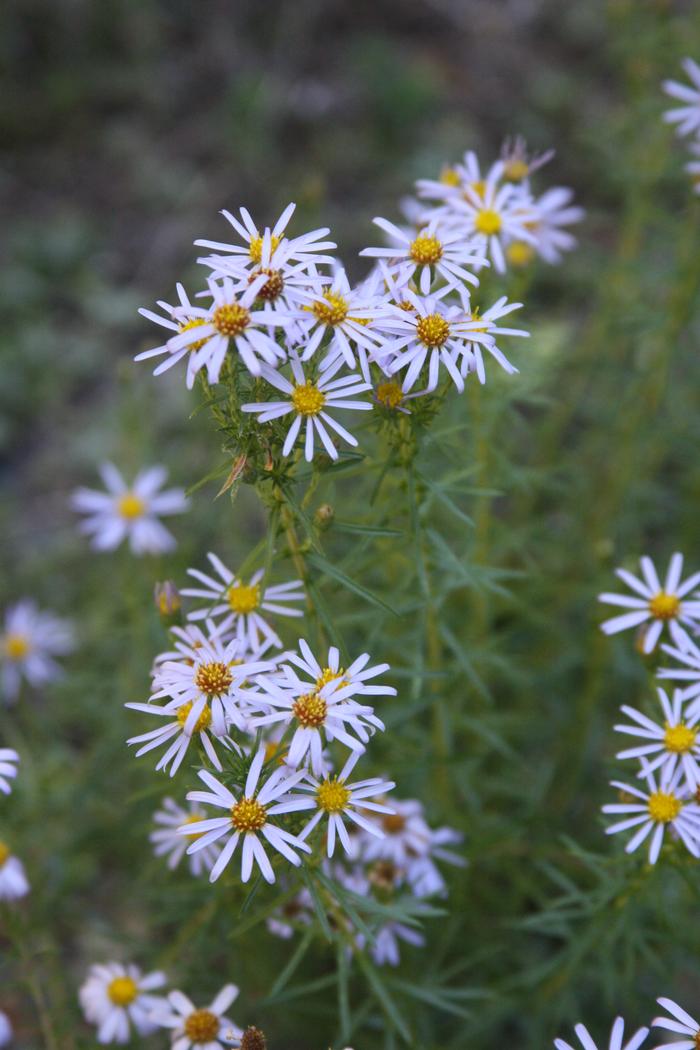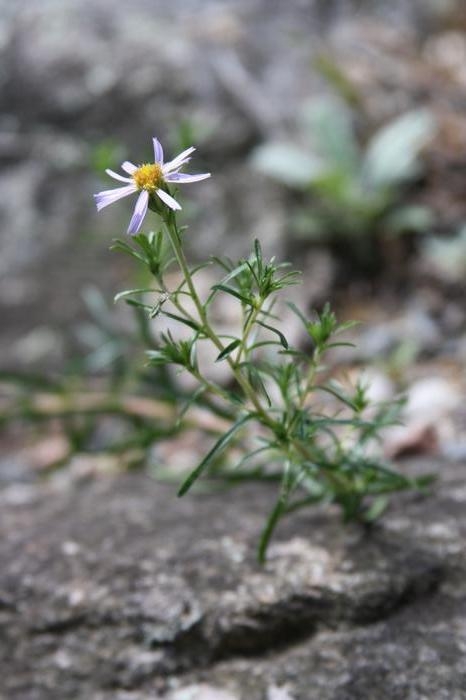This unique aster is well-suited for sandy, dry areas. Small needle-like leaves climb up the stems with flowers forming at the apex of each stem. This species stays lower than most asters. This is a great pollinator plant for native bees and moths.
Return to Plant Search Home
Cultivation Status
|
Exposure
|
Soil Moisture
|
Ecoregion
| • |
(59) Northeastern Coastal Zone |
| • |
(84) Atlantic Coastal Pine Barrens |
| • |
(58) Northeastern Highlands |
|
Ornamental Interest
|
Attracts Wildlife
| • |
Other Pollinators/Wildlife |
| • |
Attracts Songbirds |
| • |
Attracts Bees |
| • |
Host Plant |
| • |
Pollinator Powerhouse Plant |
|
Tolerance
| • |
Urban Environment |
| • |
Drought Tolerant |
| • |
Compaction Tolerant |
|
Additional Attributes
|
Landscape Use
| • |
Rock garden |
| • |
Massing |
| • |
Meadow garden |
| • |
Specimen |
|
Attractive Fall Foliage and/or Ornamental Fruit
| • |
Bright Yellow to Bronze Fall Foliage |
|
Growth Habit
|



